Contents:
You might think that it’s easy to find out the value of a quarter. It’s 0.25 of a dollar. That’s what the denomination tells us. In reality, the answer is more complicated, as rarity and history change the value dramatically.
How much is a 1942 quarter worth? Learn in this article. You will also discover many varieties and errors this quarter has.
Today, not only knowledgeable people can tell you about the coin’s value. A Coin Value Identifier on your phone knows the price too.
1942 Quarter Design and Overview
The 1942 Quarter is a part of the long-running Washington Quarter series (1932–1998). Not even the Second World War could stop the coinage production, and this and many other series (like the 1943 Mercury Dime) continued.
The design for the 1942 release remains mostly unchanged from the original release: classical and strong.
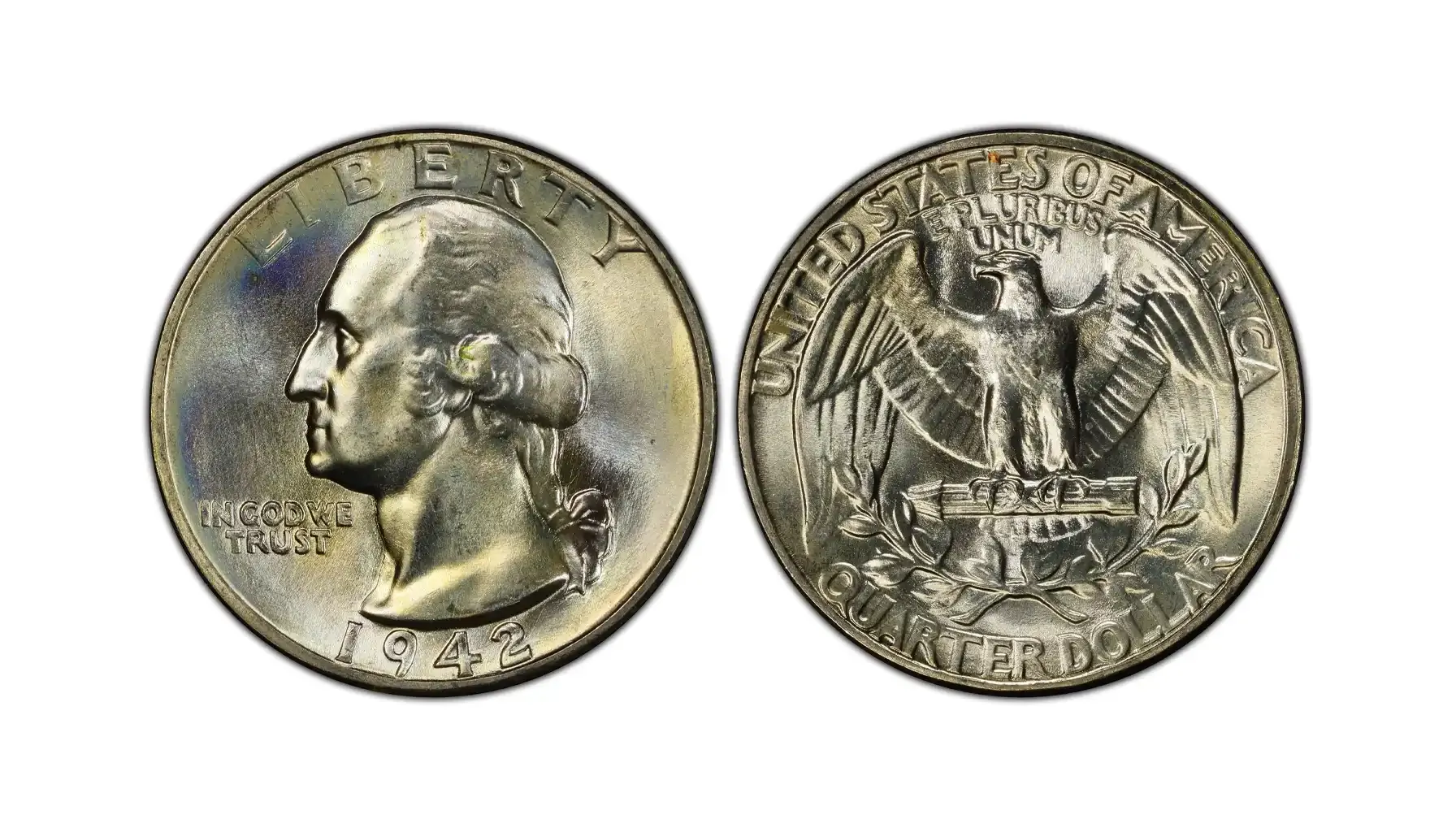
Obverse (front): Portrait of George Washington facing left. The inscription “LIBERTY” lies across the top, and “IN GOD WE TRUST” lies to the left of Washington's neck. The date “1942” is centered at the bottom.
Reverse (back): A heraldic eagle with spread wings. The eagle is clutching arrows in its talons. You will find inscriptions like “UNITED STATES OF AMERICA” at the top, “E PLURIBUS UNUM” above the eagle. The “QUARTER DOLLAR” denomination is at the bottom.
The main characteristics of the 1942 silver quarter | |
Country | United States |
Years of Minting | 1932–1998 |
Type: | Standard circulation |
Shape: | Round |
Composition and metal content | 90% Silver, 10% Copper |
Diameter | 24.30 mm |
Weight | 6.30 grams |
The Mints | United States Mint of Philadelphia, United States Mint of Denver, United States Mint of San Francisco |
1942 Quarter Varieties
Commonly, you find three mint marks on coins.
1942 without a mint mark: Made at the Philadelphia Mint.
1942 with a D mint mark: Made at the Denver Mint.
1942 with an S mint mark: Made at the San Francisco Mint.
Where is the mint mark on a 1942 quarter? It’s on the reverse, at the bottom, under the eagle.
1942 Quarter No Mint Mark Value
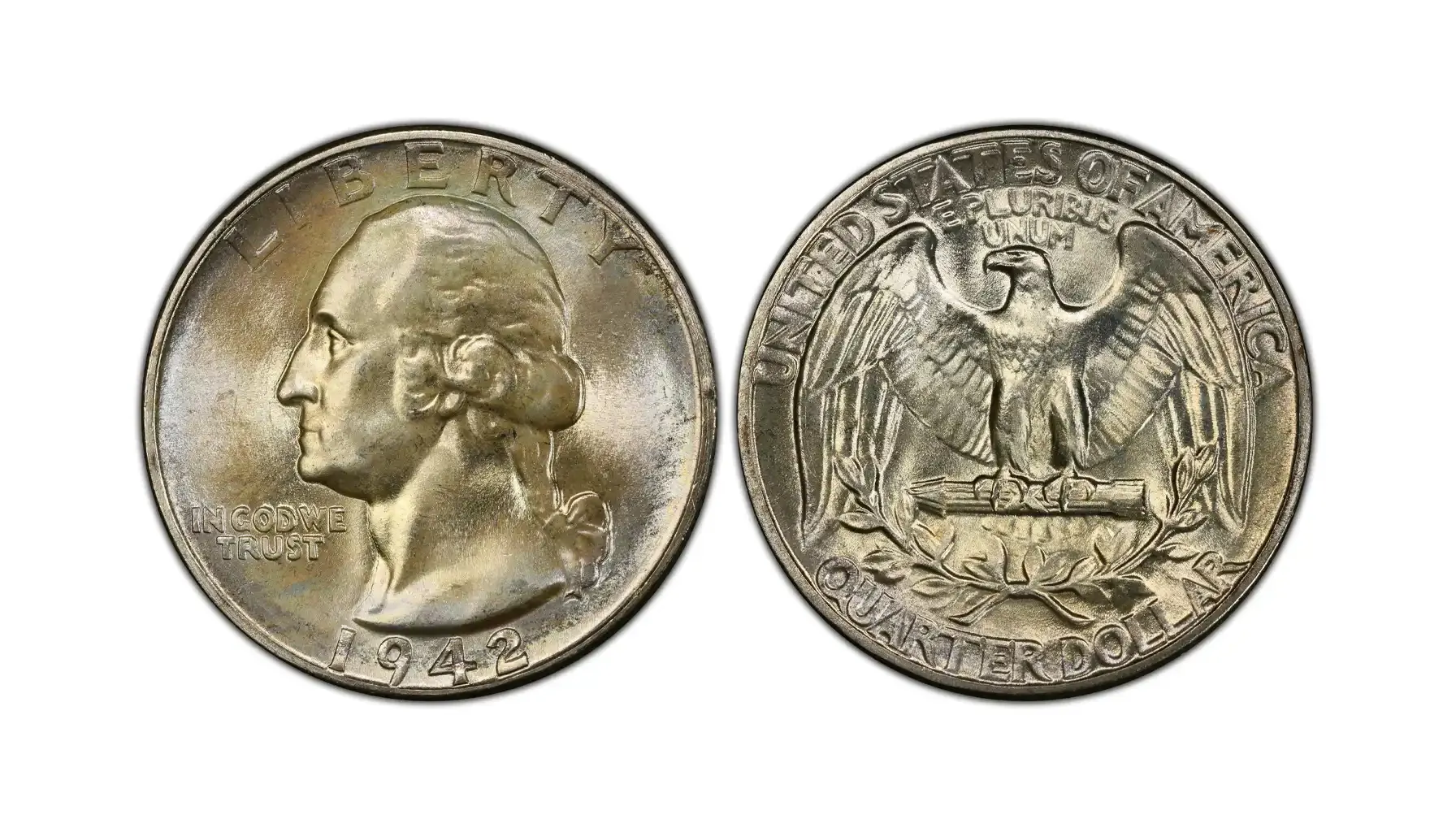
Look for: A blank space under the eagle on the reverse.
Mintage: 102,096,000.
Estimated Value: $5–6+ in lower grades.
The 1942 quarter value no mint mark is respectively high compared to most quarters (for example, it’s higher than the 2003 State quarter).
1942 D Quarter Value
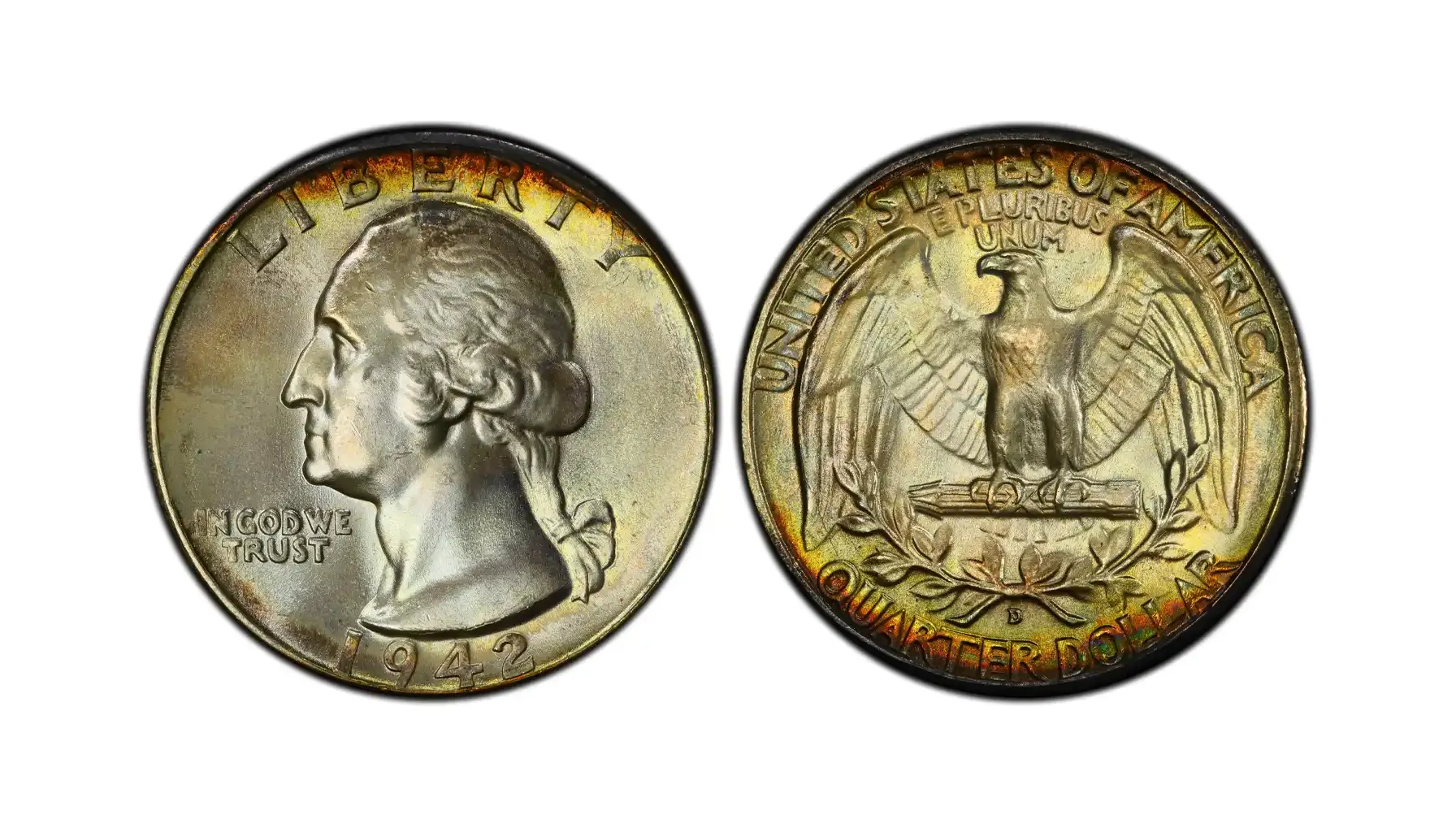
Look for: A “D” mint mark under the eagle on the reverse.
Mintage: 17,487,200.
Estimated Value: $6–7 in lower grades.
Denver-made pieces are less common and usually more valuable in higher grades. They have one more advantage: a higher presence of variable errors.
1942 S Quarter Value
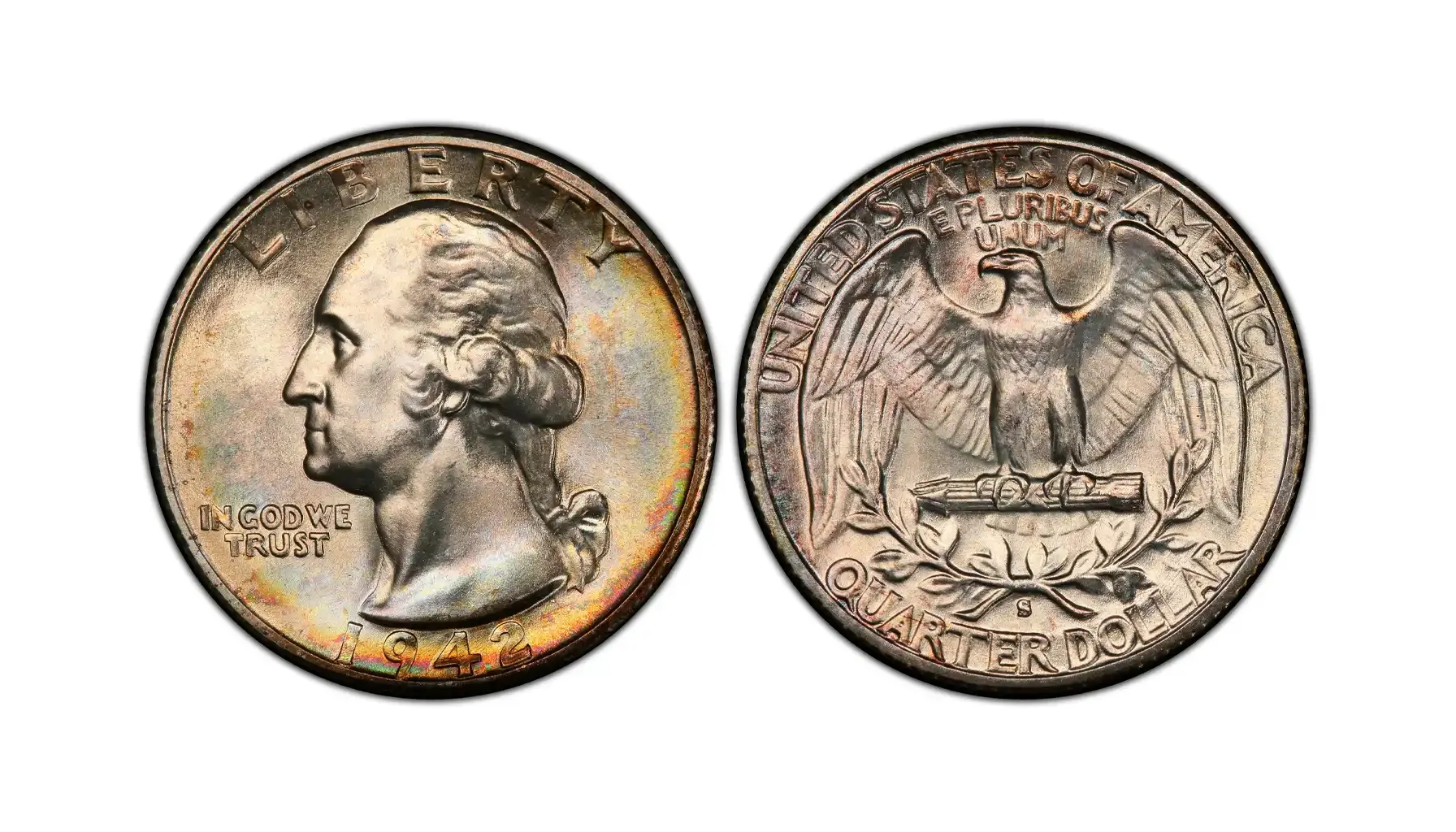
Look for: An “S” mint mark under the eagle on the reverse.
Mintage: 19,384,000.
Estimated Value: $6–7 in lower grades.
The San Francisco Mint facility was mainly concerned with proof coins. They inherently had a scarce mintage and a higher quality. Even though S-pieces had a slightly bigger mintage than the “D” mark, today, “S” pieces are considered rarer (fewer “survived” to this day).
What Affects the Value of the Quarter
Is a 1942 quarter worth anything? Indeed, it’s worth a lot and it’s very desirable for many collectors. But what exactly can increase the price?
Here are some factors that affect the 1942 quarter value today:
Metal content. As a rule of thumb, most copper-based pieces (like the 1977 Lincoln Penny) are not worth much. The 1942 quarter silver content makes this coin very valuable even at its face value.
Mint mark rarity. Logically, the scarcer the mintage of a particular mark, the pricier it is. “D” marks are worth more than Philadelphia bits due to a lower mintage.
Mint errors & varieties. Some 1942 quarters have errors or come from highly collectible varieties. For example, a Double Dies error, which could be for over $8.000.
Historical and numismatic Interest. The 1942 coins are from the World War II era, which adds historical value. Many collectors think that they can feel and remember these tragic events through metal.
Condition (Grade). If the details are preserved well, the coin seems more appealing. A prettier coin very often gets chosen over others.
Quarter Grading
Grading is essential to determining the value of a coin. Like most pieces, quarters are graded on a Sheldon scale, from 1 to 70.
The coin with “1” point is barely recognizable, and the piece with “70” points preserves details immaculately and shines just as clearly as on the day of making. Considering these quarters are from 1943, great work was done to keep this piece pristine.
Grade | Description |
Poor (P-1) | Barely identifiable outlines, and the date may be gone |
Fair (FR-2) | Heavily worn look, but the date is still readable |
Good (G-4) | Heavy wear overall, the rim is flat |
Very Good (VG-8) | Major details are visible, and the letters are still readable |
Fine (F-12) | Moderate overall wear, the details are better preserved |
Very Fine (VF-20) | Moderate wear, eagle feathers show up |
Extremely Fine (EF/XF-40) | Light wear on high points |
About Uncirculated (AU-50 to AU-58) | Slight traces of wear, strong luster |
Mint State (MS-60 to MS-70) | No wear to be seen, full mint luster |
1942 Quarter Error List
Coins with errors have always been admired by collectors, even in low grades. Considering the time of mintage (old and challenged), the 1942 release had many errors to choose from, and we will feature some of the most popular and desired ones.
Cud
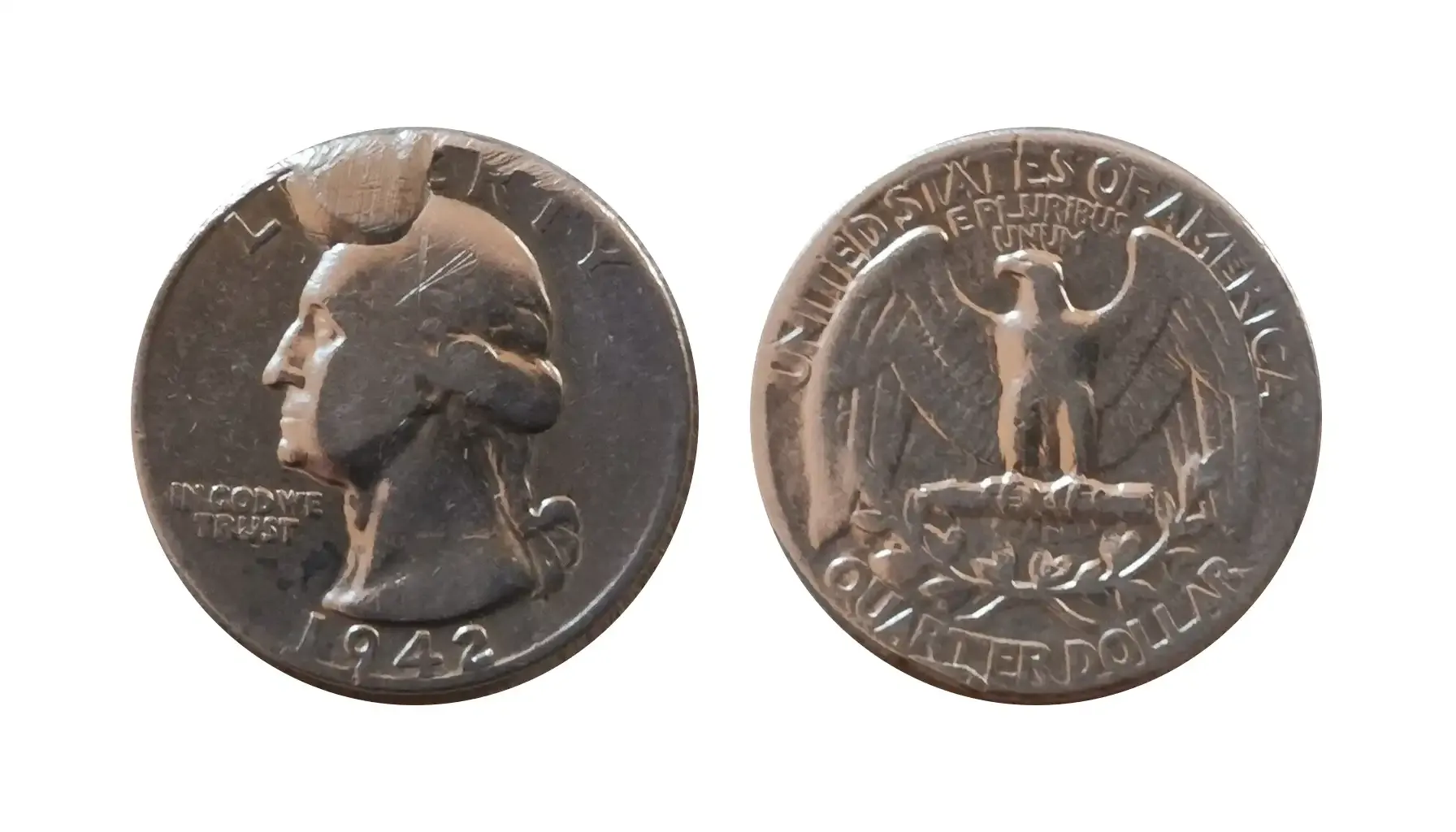
Look for: A blob-like area that appears on the edge of a coin. The blob is smooth and raised.
Estimated value: $$15 – $40+, depending on the error severity.
Error cause: A section of the die (usually along the rim) breaks off due to stress, age, or repeated use.
A common error that can still raise that value tenfold, even for low-grade pieces.
Strikethrough

Look for: Parts of the design that seem missing, flattened, or oddly shaped. There should be wrong textures impressed on the surface.
Estimated value: $15 – $50+, depending on the severity.
Error cause: Foreign material (like grease, cloth, wire, metal shavings, or even a die cap) gets between the die and the coin blank (planchet) during striking.
This type of error has a fluctuating rarity. For some pieces, it’s rare (especially for modern ones), but for old bits from 1943, it’s quite common.
1942 Double Die Obverse (DDO)
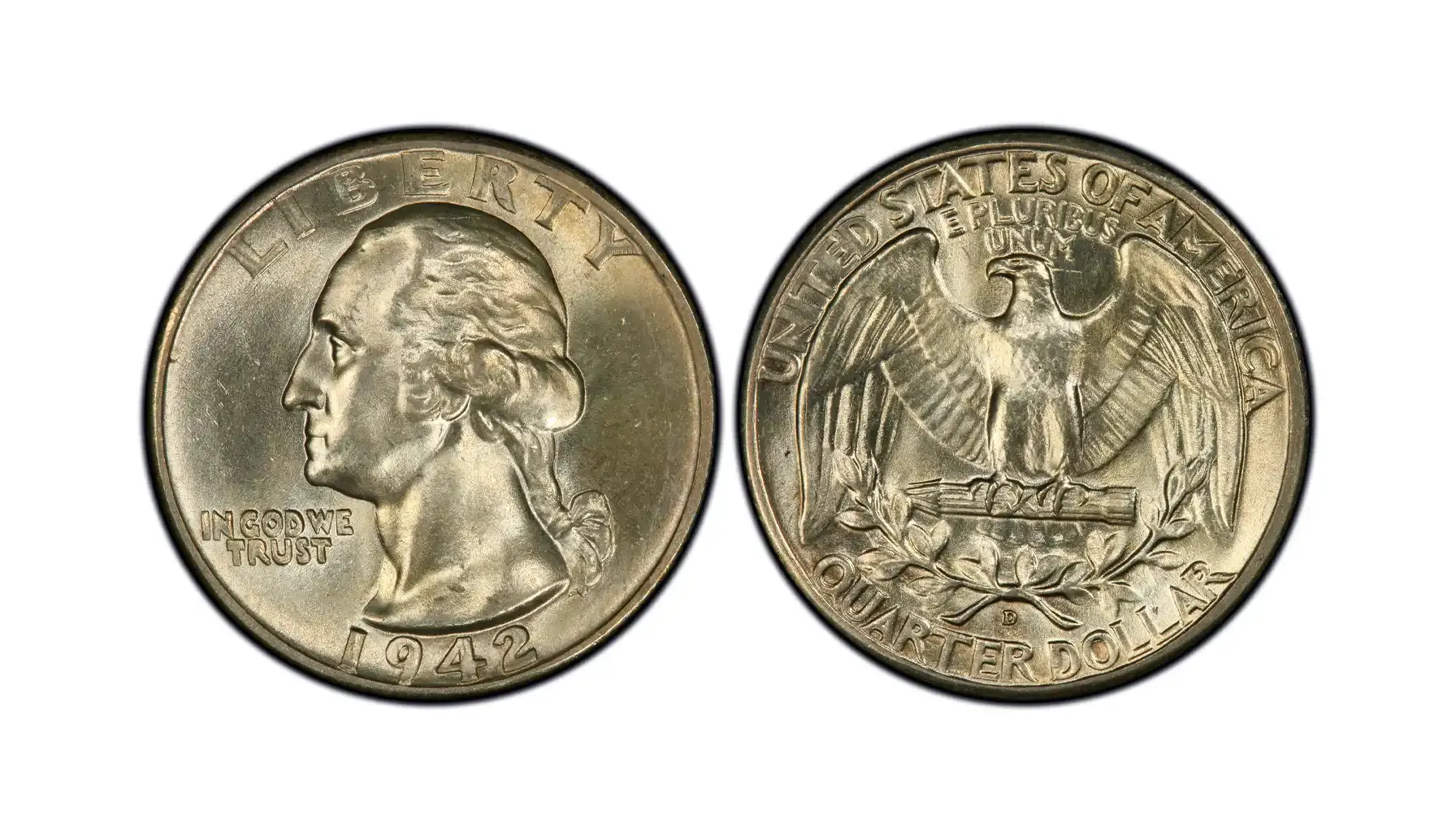
Look for: Doubled features on inscriptions “LIBERTY,” “IN GOD WE TRUST,” or the date “1942”.
Estimated value: $75 – $300+.
Error cause: The die was struck more than once, slightly offset.
One of the most desired errors. If you have a State quarter, just the presence of DDO can get your coin into the top 10 State Quarters list. The example from the photo was sold for over 8,000$ and has a doubling on the “LIBERTY” and “IN GOD WE TRUST” inscriptions.
1942 Silver Quarter Value
We’ve found out what makes this piece rare and desired. Now, how much is a 1942 silver quarter worth?
Condition | Philadelphia | Denver (D) | San Francisco (S) |
Good (G-4) | $5–6 | $6–7 | $6–7 |
Fine (F-12) | $6–7 | $7–8 | $7–8 |
Extremely Fine (EF) | $8–12 | $10–14 | $10–14 |
About Uncirculated | $14–18 | $18–25 | $18–25 |
Mint State (MS-60) | $18–35 | $22–50 | $30–50 |
MS-65 (Gem BU)+ | $40–150+ | $45–250+ | $100–250+ |
The value of the 1942 quarter is high and goes much higher than its face value. San Francisco-made pieces are especially pricy.
Coins ID Scanner
It’s impossible to know all the coinage. We have so many things to worry about, and there’s just not enough brain space or time to learn all the coins. But worry not, as Coin ID Scanner will recognize the coins for you.
Here are some of the app’s features:
Instant Identification: Snap or upload an image of your collectible, and the app will use the AI to identify it within seconds.
Value Estimates: Offers price approximations based on market data.
Collection Management: Allows users to create and manage personal collections, save images, notes, and track estimated values.
AI Chatbot: Built-in assistant to answer coin-related questions, including history, grading tips, and identification help.
Numismatic News & Education: Offers news, blog posts, and guidance on coin series and errors.
Coin ID Scanner is a great addition to any collector’s tool set. You can download the app on iOS and Android.



